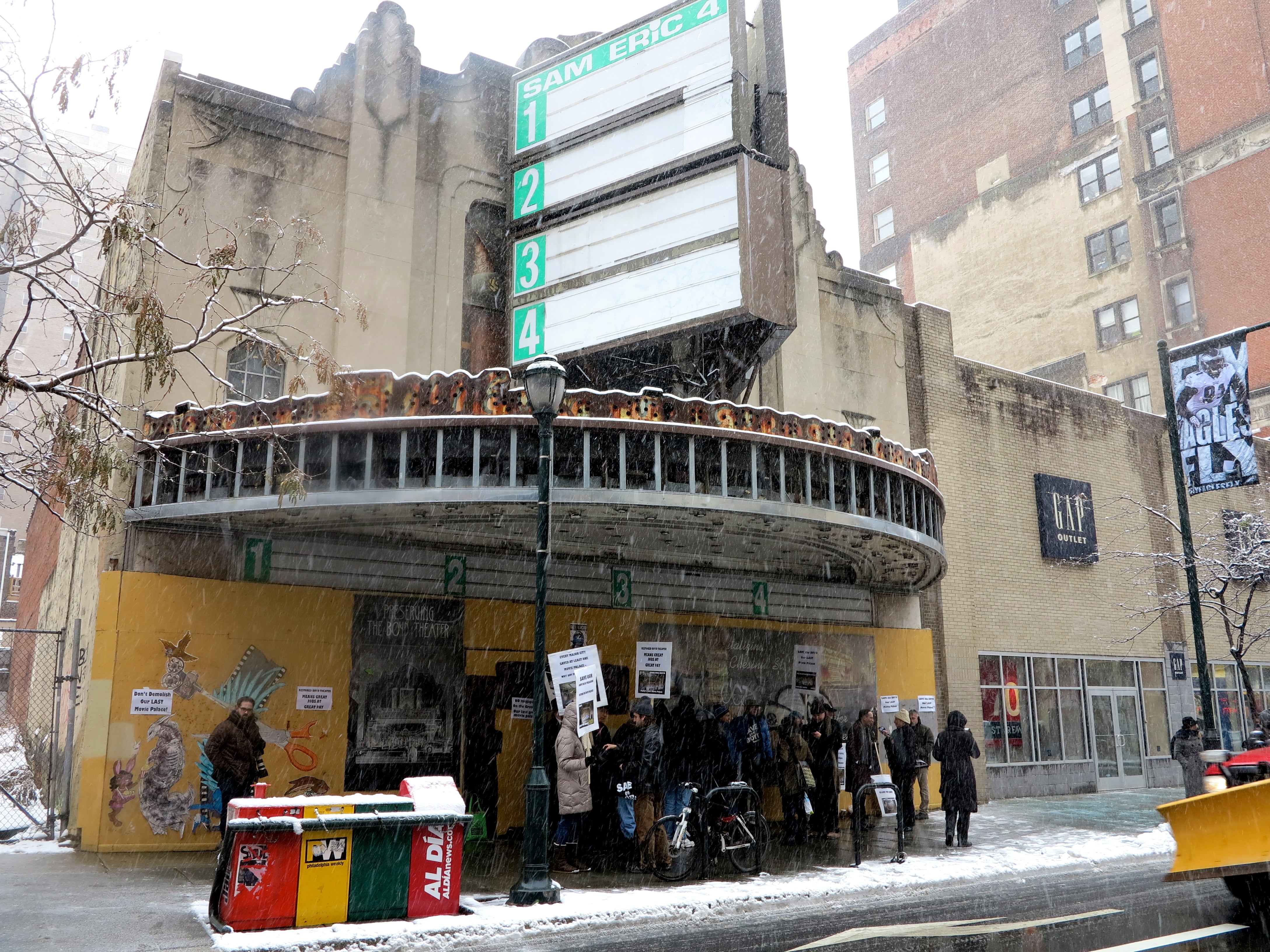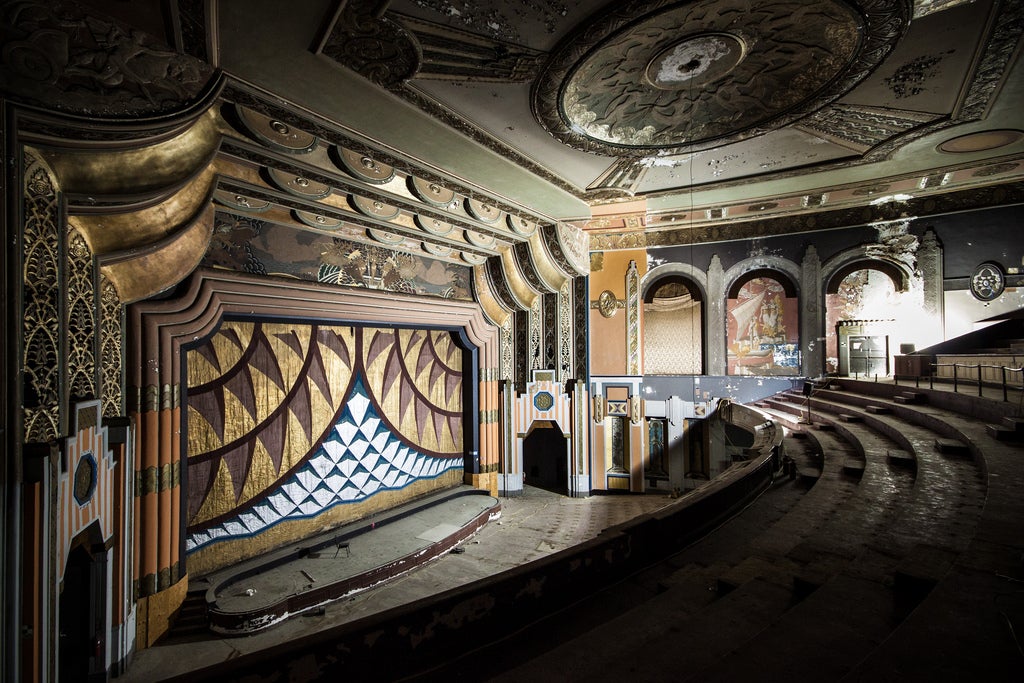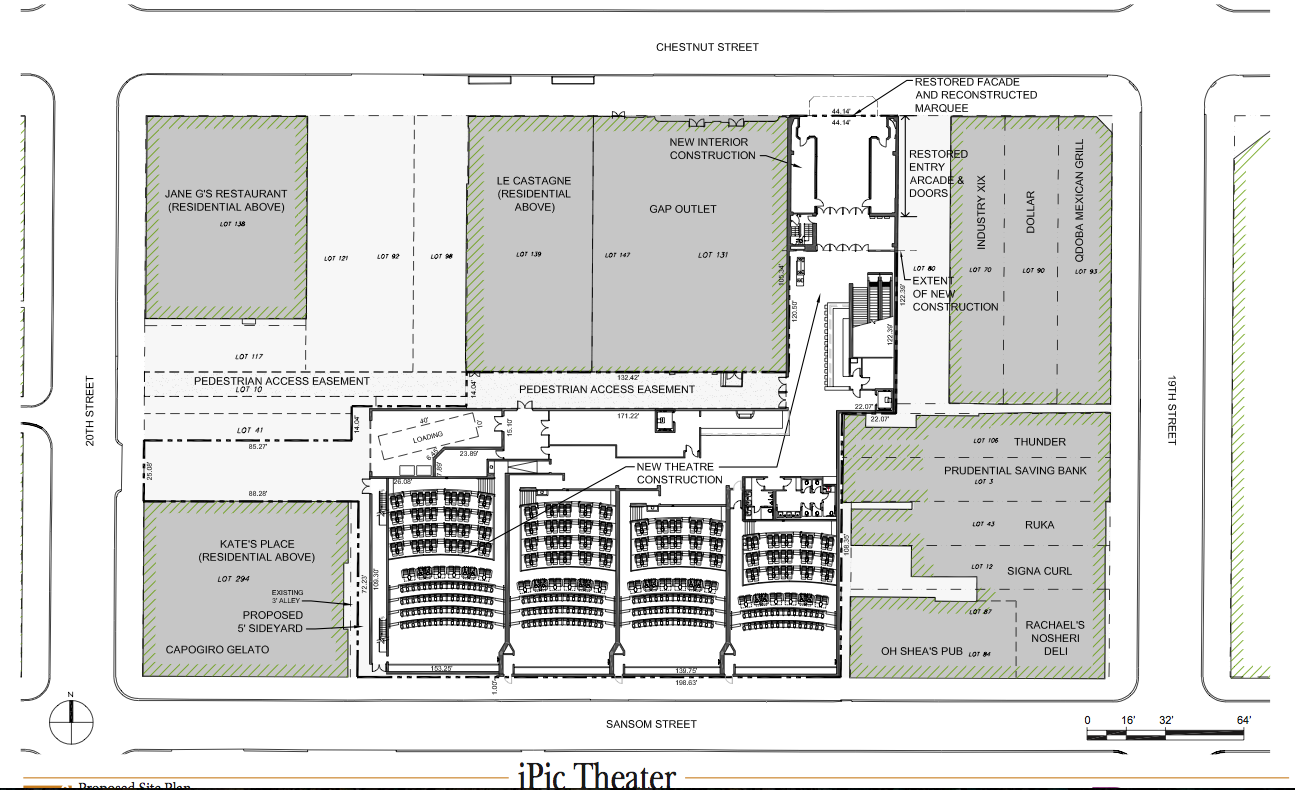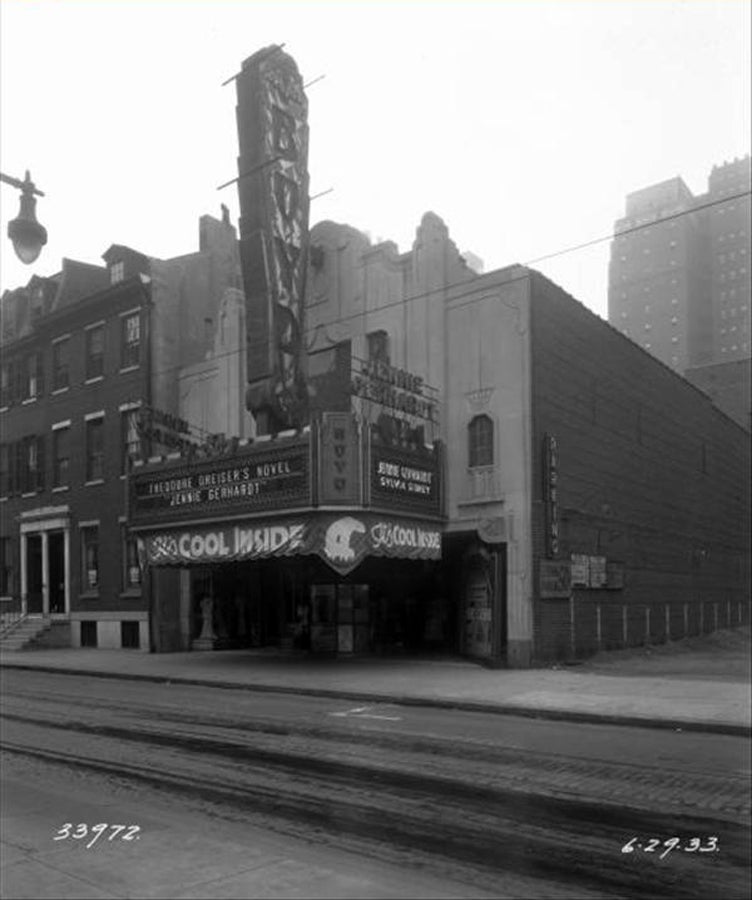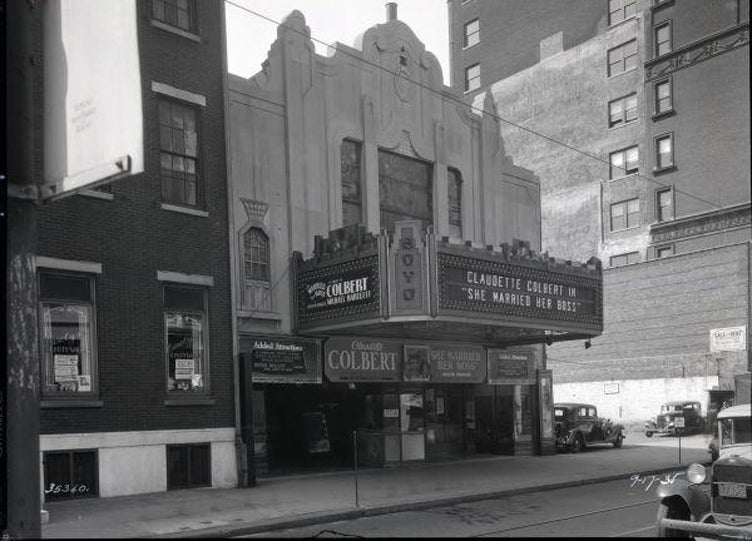Complicated Boyd Theatre financial hardship hearing runs out of meeting minutes, will be continued
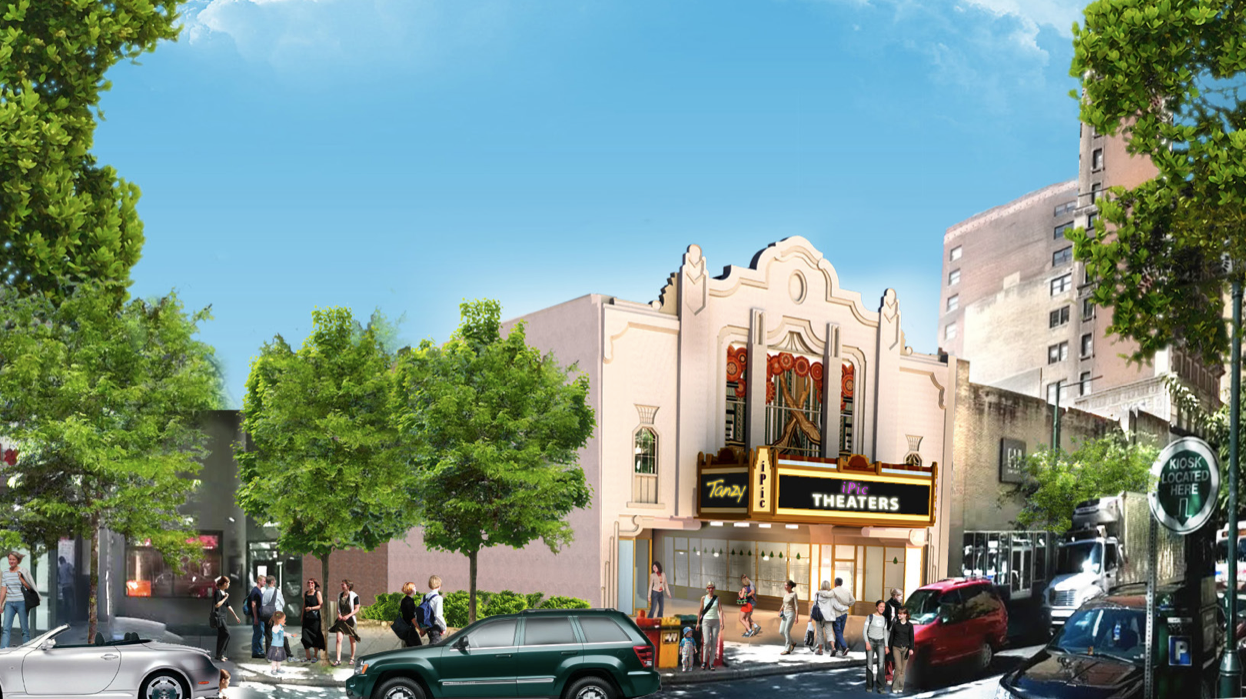
After hours of testimony from finance and construction experts explaining how they concluded that the hardship that would be incurred by the owners and operators of the Boyd Theatre in the event of any reuse would be fiscally unsound, and the voiced support for and dissent against that analysis, the Historical Commission’s Committee on Financial Hardship ran out of time and adjourned the meeting.
Discussion and testimony in this complex case will be continued on the committee level or during the February meeting of the Historical Commission (details forthcoming).
Tuesday morning, in a room packed with supporters and neighbors of the now-decrepit 2,300-seat movie house built in 1928, the hardship arguments by the legal team ( Matthew McClure, Ballard Spahr) and consultants for the owner (Live Nation Worldwide and IPic, the operator and tenant), defined in great detail how myriad approaches to save the Boyd all fall far short of being financially viable.
Testimony from finance experts, engineers and near neighbors painted a graphic and sad picture of the old movie palace. The structure, which still sports an iconic Art Deco interior, is full of vermin, stripped of all its copper, electrical and plumbing infrastructure and lacks an operational fire safety system. It is blighting the neighborhood.
Bottom line, it’s too far gone bring back its glory-days look.
Not all parties in the room were buying that.
Caroline Boyce, director of the Preservation Alliance of Greater Philadelphia, criticized the hardship application and analysis from Econsult and Real Estate Strategies (RES) as being incomplete about the marketing effort to sell the Boyd and silent about the feasibility of some of the reuse options. She concluded it lacks data from previous owners, misrepresents the tax credit potential and the analysis included incorrect methodology.
Howard Haas, president of Friends of the Boyd, testified in support of complete restoration of the theatre. “The Boyd is an example of how preservation law should be applied,” Haas said. “The Boyd’s historic auditorium, which would be demolished and rebuilt, is the theatre. Replacing the auditorium with a new multi-screen complex is not historic preservation.”
Many development plans for the Boyd have come and gone in the last decade. The most recent plan, as PlanPhilly reported in November, involves demolishing most of the historic theater to make way for the construction of a boutique, eight-screen movie house. The only part of the original Boyd Theatre proposed for reuse under the current plan would be the Chestnut Street façade and the exterior entrance area where tickets were sold (known as the headhouse).
The Boyd was listed in the Philadelphia Register of Historic Places in 2008.
That same year City Council enabled the Historical Commission to designate exceptional interior spaces as historic, but designation of the Boyd’s deteriorating but remarkable Art Deco interiors was never pursued.
In order to demolish most of the building, the developers need to persuade the Historical Commission that there is a “financial hardship” so burdensome that no owner can reasonably reuse or adapt the property for any purpose. In order to justify demolition based on financial hardship, the owners must show that sale of the property “is impracticable, that commercial rental cannot yield a reasonable rate of return, and that other potential uses are foreclosed.”
The Financial Hardship Committee, which will make a recommendation to the Historical Commission, only has jurisdiction in matters concerning the historic exterior of a building and commissioners and committee members Dominque Hawkins and Bob Thomas brought this conundrum to the fore.
“Our limits of jurisdiction—we regulate historic exteriors, but have no authority to protect interior space—leaves me torn,” Hawkins said. “The facade is part of the public realm and in jurisdiction of the commission but if within the existing envelope of the building the owner gets a permit to insert movie screens … they, by right, could do all of that.”
But the argument about any reuse being prohibitive was the crux of what would-be developers put before the Historical Commission’s Committee on Financial Hardship on Tuesday, January 28. [PDF]
To inform its process the Historical Commission engaged an independent consultant to review the hardship application (a layer of review made possible thanks to an earlier hardship settlement). Real Estate Strategies (RES) issued its report on the Boyd hardship filing last week. [PDF]
As part of their work RES conducted interviews with developers, advocates, and officials; reviewed the developer’s hardship affidavit and supporting documentation; inspected the Boyd’s interior and exterior; and reviewed some possible development alternatives. The development scenarios RES explored included reuse as a Broadway-style theater, a multipurpose live entertainment venue, a single-screen movie theater, retail and restaurant uses, and combined restaurant/theater uses.
Based on interviews and analyses, RES determined “that the redevelopment of the Boyd is not economically feasible without significant public subsidies.”
None of the specific scenarios studied by RES, and supplemented by analysis from Econsult, were projected to be profitable enough given the anticipated construction costs, which could run in the $40-million range. In addition to the expense associated with upgrading the building’s systems and rehabbing it for a new use, RES found the Boyd’s location to be a drawback.
“All of these factors result in excessive costs and extensive risks associated with redeveloping the building,” RES concluded.
Retail is a newer reuse concept for the Boyd, which RES explored in its research. In order to make retail work RES found that the Boyd would need a longterm tenant paying $120 per square foot—after utilities, taxes, and insurance—for the project to work.
And that is a long shot. By comparison, RES pointed out, the Nordstrom Rack planned for the corner of 17th and Chestnut is paying $50 per square foot, triple-net, for space in a corner building on a stronger retail block. The 1900 block of Chestnut Street is “not considered to be one of the City’s prime locations commanding premium prices,” the report said, making a retail or restaurant use more challenging.
One plan that RES was unable to fully explore as part of its study was one put forward in 2011 by an entity called 1910 Chestnut LP. RES did see preliminary plans this group was advancing, which involved a restaurant and theater reuse. But “the individual did not provide his name and declined to share any information or analysis to substantiate the contention that the uses proposed were financially feasible.” RES could not evaluate if the plan was economically feasible because of incomplete information.
Committee members present were Jonathan Farnham, JoAnn Jones, Sam Sherman, Dominque Hawkins, Robert Thomas, Sara Merriman, Kim Broadbent and Laura DiPasquale.
Boyd Redevelopment Timeline
May 2002 – March 2003: Goldenberg Development Corporation explored reuse strategies (concert venue, dinner theater, special event space, offices and classrooms for the Pennsylvania Ballet).
September 2003: Goldenberg and Clear Channel announce partnership to restore the Boyd as a theater for first-run Broadway touring productions. Goldenberg was unable to secure public funding toward this project.
March 31, 2005: Goldenberg sold the Boyd to Boyd Development LP, a subsidiary of Clear Channel, then Live Nation. Live Nation continued the attempted redevelopment of the Boyd as a theater for touring Broadway shows. Live Nation, however, sold its theatrical division, stalling out on redeveloping the Boyd.
August 2008: Historical Commission votes to list the Boyd in the Philadelphia Register of Historic Places.
August 2008 – January 2010: Hal Wheeler of ARCWheeler advanced redevelopment strategy which would have preserved the Boyd and added a 28- story, 250-room hotel on the adjoining lot that would have cantilevered over the Boyd’s auditorium. Hal Wheeler passed away in January 2010.
2010: Live Nation considered renovating the Boyd into a 2,200-capacity standing general admission live entertainment venue for touring live music acts. Live Nation determined it could not justify the rehabilitiaton in light of anticipated revenues.
January – April 2011: 1910 Chestnut LP advanced a mixed-use redevelopment plan, but the group was not able to secure investment partners or finalize the development plan.
October 2012: Live Nation and International Finance Company (as R Investment Nine LP) entered into agreement of sale for the Boyd. R Investment Nine has a ground lease agreement with 30 West Pershing LLC which has sub-groundleased with iPic. R Investment Nine is the project developer and owner; iPic would be the tenant and operator. The current proposal is to construct an eight-screen movie theater behind the Chestnut Street facade and headhouse.
Source: RES Report 1/16/14
WHYY is your source for fact-based, in-depth journalism and information. As a nonprofit organization, we rely on financial support from readers like you. Please give today.




